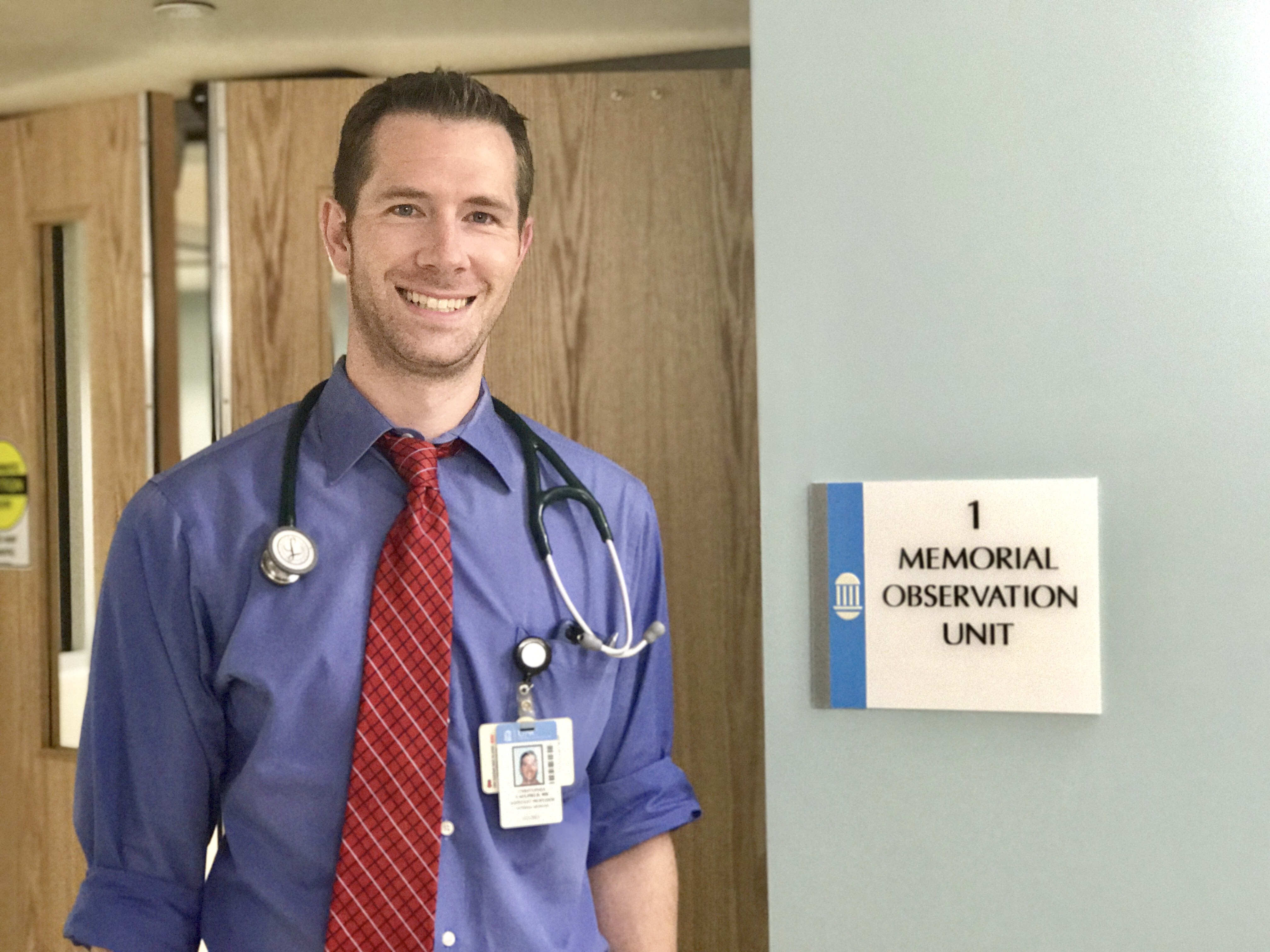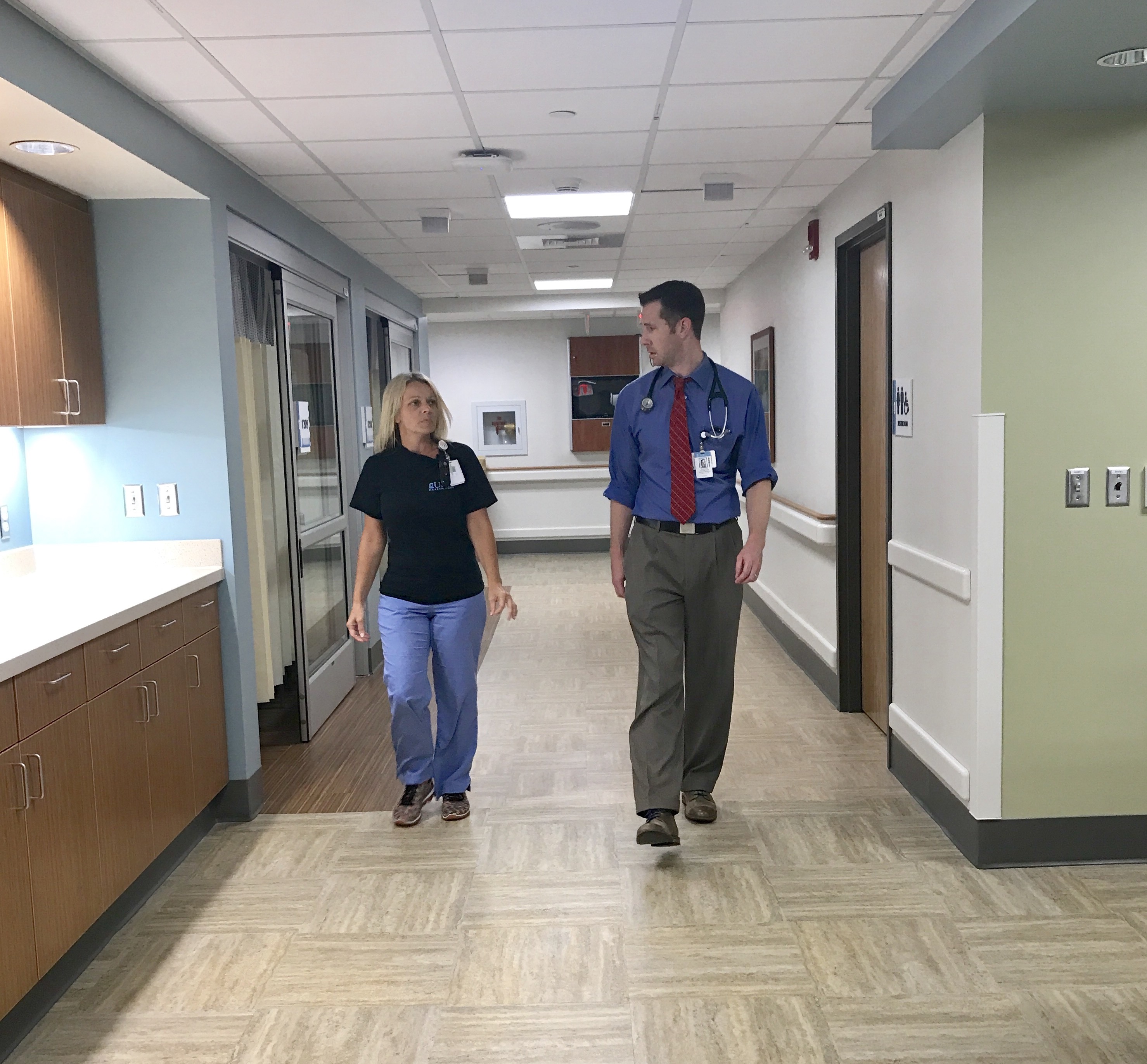While one patient waits coughing into a mask, another could present with chest pain or arrive by ambulance after a trauma. The ER cares for people with every imaginable issue. Some are life-threatening. Some are not, but they all require immediate care. How does a medical center compassionately serve each and use resources efficiently? The answer is UNC’s 1 Memorial Observation Unit.


by Kim Morris, UNC Department of Medicine
The department of medicine’s division of hospital of medicine is changing the front lines of medical care, and it’s for the betterment of all. The 1 Memorial Observation Unit opened June 19, 2017, managed by hospitalists and family medicine physicians who are providing evidence-based, protocol-driven medicine in order to improve efficiency and quality of patient care.
“This is a dedicated closed unit for patients who are brought into the hospital on observation status,” said Dr. Chris Caulfield who is a clinical assistant professor in the division of hospital medicine and directs the new unit.
“We evaluate them over a 24-hour period of time to make sure they remain clinically stable. They receive the appropriate work-up with diagnostic studies and evaluations. We ensure that the follow-up is in place before they leave the clinical setting.”
Most patients come through the emergency room where a utilization management nurse determines the observation status, closely reviewing every case alongside the medicine admissions officer to determine if a patient is most appropriate for inpatient care versus observation status. Caulfield says this is initially determined by a set of criteria recognized across the system.
“The observation unit allows patients easier access to care with coordinated and dedicated responsiveness by providers and ancillary staff. The necessary studies, imaging tests, and consults are all performed more quickly. After completing diagnostic evaluation, we determine if a patient needs to become an inpatient for further medical care in the hospital or is safe to be discharged, to then receive primary care from a local provider.”
Dr. Caulfield says common observation issues may include chest pain, abdominal pain, syncope, cardiac dysrhythmias, skin and soft tissue infections and congestive heart failure.
“In the past, observation status patients might be scattered throughout the hospital, cared for by different medical teams without a standardized practice by providers, and varying lengths of stays; but this is not the case anymore. Protocol-driven care is the current direction of observation medicine. We are working as a team with a care manager, utilization management staff, and nursing to streamline a patient’s entire care, and so far it is working well.”
UNC’s observation providers comprise 20 integrated physicians from internal medicine and family medicine, functioning as a team to give patients a multi-disciplinary approach to care. On any given day, one hospitalist and one family medical physician are on site to serve patients. Best of all, patients get to see their physician multiple times a day, if needed, before and after lab and test results are read, and that’s because the patients are localized on to one unit. Ultimately, this makes for better patient care.
“We want patients to get the care they need and deserve in order to get better sooner, and get back to their quality of life before hospitalization. By providing fast and efficient care, the emphasis is on hours of care versus the traditional length of stay in days.”
The unit currently has 15 beds but the goal is to have all 25 beds opened by the end of 2017.
Industry studies of ED managed observation units demonstrate shorter lengths of stay, fewer inappropriate ED discharges, fewer adverse outcomes and lower readmission rates.